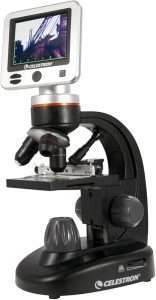Written by Microscopehunt Authority
.

Software for Digital Microscopes : Digital microscopes have become essential tools in various fields, from education to research and quality control. The software that accompanies these microscopes enhances their capabilities, making it easier to capture, analyze, and share images and data. This article will explore what digital microscope software is, its key features, benefits, and some recommended software options.
What is Digital Microscope Software?
Digital microscope software is a program designed to work with digital microscopes. It enables users to view, capture, and edit microscope images on a computer. This software transforms raw images into useful data, making it easier to analyze specimens for various applications.
Key Features of Digital Microscope Software
The software for digital microscopes comes with several important features that improve the user experience.
Image Capture and Editing
Digital microscope software enables users to capture high-quality images and videos of microscopic specimens. Users can also edit these images, adjusting brightness, contrast, and color settings to enhance visibility and detail.
Measurement Tools
Many software programs include tools for measuring dimensions, angles, and areas directly on the captured images. This feature is crucial for professionals in scientific research and manufacturing, where precise measurements are vital.
Annotation and Markup
Users can annotate their images by adding text, arrows, or shapes to highlight specific areas of interest. This feature is particularly helpful in educational settings, allowing teachers and students to emphasize important details in their observations.
Data Organization
Digital microscope software often includes tools for organizing images and videos. Users can create folders, tag files, and search for specific images easily. This organization streamlines research and educational projects.
Compatibility and Integration
Most digital microscope software is designed to work with a range of microscope models and operating systems. This flexibility allows for easy integration into existing setups, enhancing overall functionality.
Benefits of Using Digital Microscope Software
Using software with digital microscopes offers numerous advantages across different fields.
Enhanced Visualization
Digital microscope software improves how users visualize specimens. With features like zooming and adjusting lighting, users can see fine details that are difficult to observe with the naked eye, which is essential in research and education.
Improved Analysis
The measurement and image processing tools enable more detailed analysis of specimens. This capability is particularly valuable in scientific research, leading to new insights and discoveries.
Increased Efficiency
Digital microscope software streamlines workflows. The ability to capture, edit, and organize images in one place saves time and effort, making it a valuable tool in professional environments.
Educational Advantages
In educational settings, digital microscopes and their software make learning interactive and engaging. Students can capture images, annotate them, and share findings easily, enhancing understanding of complex topics.
Cost-Effectiveness
Investing in digital microscopes with accompanying software can be cost-effective over time. They reduce the need for traditional microscopy methods and the associated costs, while also saving time and resources.
Recommended Digital Microscope Software
Here are some popular digital microscope software options to consider:
1.AmScope Software
AmScope offers user-friendly software that supports image capture and measurement tools. It is ideal for educational purposes and comes with features for annotating images and organizing data efficientlyMotic Images Plus
2.ToupTek
ToupTek software works with various digital microscopes. It includes features for image capture, editing, and measurement, making it suitable for both educational and research applications.
3.ImageJ
ImageJ is a powerful open-source software used for analyzing scientific images. It supports various file formats and offers extensive measurement and processing capabilities, making it popular among researchers.
4.MicroCapture
MicroCapture is designed for digital microscopes and provides simple image capture and measurement tools. It is user-friendly, making it a good choice for educational institutions and hobbyists.
5.Zebra Imaging
This software is perfect for performing 3D imaging and analysis. It allows users to create high-quality visualizations of specimens, making it ideal for advanced research applications.
6.LabArchives
LabArchives offers a digital lab notebook integrated with imaging capabilities. It allows users to capture images from microscopes, annotate them, and organize research data effectively.
7.QCapture
QCapture is software created for taking and studying images from microscopes. It includes tools for image enhancement and analysis, making it suitable for both educational and professional use.
How to Choose the Right Software
When selecting software for your digital microscope, consider the following factors:
Compatibility
Make sure the software works with both your microscope model and your computer’s operating system. This will help avoid technical issues during installation and usage.
Features
Identify the features that are most essential for your requirements. If you require advanced measurement tools or specific editing capabilities, choose software that offers these functionalities.
User-Friendliness
Look for software with an intuitive interface. A user-friendly design will make it easier for you and your team to adopt and use the software effectively.
Support and Updates
Verify whether the software provider offers customer support and provides regular updates. Good support can be crucial if you encounter any issues, while updates can enhance the software’s features over time.
Conclusion
Digital microscope software is an essential part of modern microscopy, enhancing the functionality of digital microscopes. With features like image capture, measurement tools, and data organization, this software provides numerous benefits across various fields, including education and research. By choosing the right software, users can maximize their productivity and gain deeper insights into the microscopic world.
